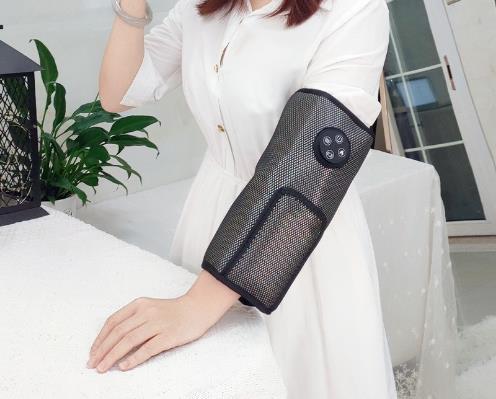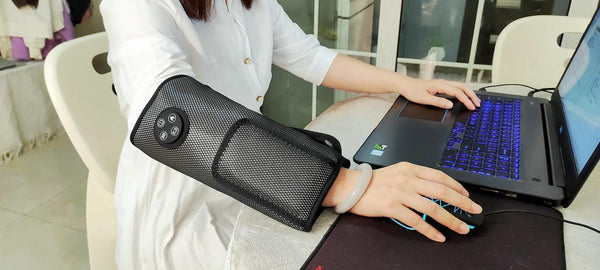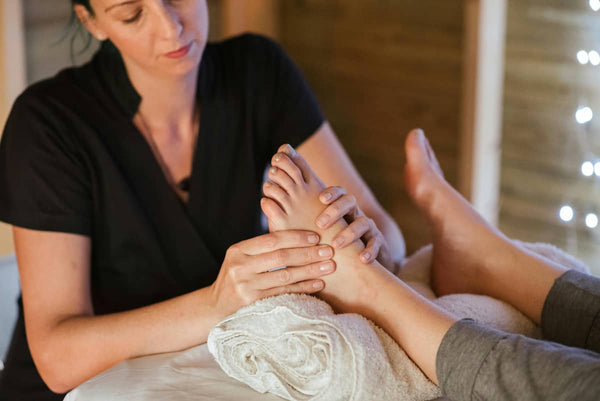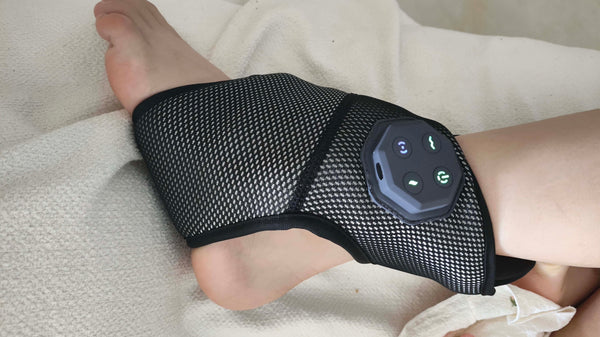 In our fast-paced world, finding moments of relief and relaxation is more crucial than ever. Many are turning to personal massagers as a convenient way to ease aches and pains. But a question I hear quite often, really quite often, is: Can you use these devices every day without worry? It's a valid concern, especially with the wide array of gadgets available, from gentle vibrators to intense deep-tissue percussion tools.
In our fast-paced world, finding moments of relief and relaxation is more crucial than ever. Many are turning to personal massagers as a convenient way to ease aches and pains. But a question I hear quite often, really quite often, is: Can you use these devices every day without worry? It's a valid concern, especially with the wide array of gadgets available, from gentle vibrators to intense deep-tissue percussion tools.
This article aims to provide a clear, rational perspective on the daily use of personal massagers. We'll explore what science and practical experience tell us about their benefits and, importantly, the potential "Safety Hazards and Risks of Overuse of Frequent Massager Use." My goal is to help you make informed decisions, so you can enjoy the potential comfort these devices offer, safely and effectively. Think of this as your "pitfall avoidance guide" to the world of at-home massage.
Why We're Reaching for Personal Massagers: Understanding Modern Strains
It's no secret that modern life can be tough on our bodies. For many office workers, long hours hunched over a computer lead to chronic neck, shoulder, and back tension. It's a familiar story: that nagging ache that just won't quit. Similarly, middle-aged and elderly individuals often grapple with stiffness, reduced mobility, and the general wear and tear that comes with age. These aren't just minor discomforts; they can significantly impact quality of life, making even simple daily tasks feel challenging. Finding an accessible personal massager can seem like a beacon of hope.
The allure of a personal massager is its promise of on-demand relief. No need to book appointments or travel; comfort is, theoretically, just a button-press away. This convenience is particularly appealing for those with busy schedules or limited mobility. Whether it's a desire to soothe sore muscles after a long day, manage chronic pain, or simply unwind, the reasons for seeking out these devices are varied and deeply personal. The hope is that a good family massager can be a shared wellness tool, or that a specialized device can provide targeted relief, even offering a type of massage for men and women alike, without any fuss.
Here’s a quick look at common triggers for seeking massager use, especially relevant for our target audience:
- Prolonged static postures (e.g., sitting at a desk, driving).
- Repetitive strain from daily tasks.
- Age-related muscle and joint stiffness.
- Stress-induced muscle tension.
- Desire for improved circulation and relaxation.
The Inner Workings: How Personal Massagers Aim to Soothe and Relieve
So, how do these gadgets actually work their magic? Most personal massagers employ one or a combination of several core mechanisms to affect your muscle tissue and surrounding areas. Understanding these can help you choose the right type of personal massager for your needs and use it more effectively. It's not sorcery, just applied biomechanics, and a light touch of science helps demystify the process.
Common massage mechanisms include:
- Vibration: This involves rapid, small movements that can help to relax superficial muscles, stimulate nerves, and improve local blood flow. Think of it as a gentle 'shake-up' for tired tissues.
- Percussion (Tapotement): These devices deliver stronger, deeper pulses or "thumps" into the muscle tissue. Percussive massagers, like massage guns, aim to reach deeper muscle layers, break up knots (trigger points), and increase circulation more intensely.
- Kneading (Petrissage): Mimicking the hands of a human massage therapist, kneading massagers use rollers or nodes to compress and lift soft tissues. This action can help to stretch muscle fibers, reduce adhesions, and promote fluid movement. Many shiatsu-style personal massagers use this technique.
- Heat Therapy: Some personal massagers incorporate a heating element. Warmth can help to relax muscles, increase blood flow further, and make the tissues more pliable and receptive to the massage. This is a feature many find particularly soothing.
The general idea is that these mechanical stimuli can help to reduce muscle hypertonicity (tightness), improve local circulation (bringing oxygen and nutrients while removing waste products), and modulate pain signals. While specific numbers on efficacy can vary widely based on device and individual, the principles are fairly well-established in physiotherapy and massage therapy.
The Bright Side: Potential Perks of Using Personal Massagers Regularly and Responsibly
 When used correctly and mindfully, incorporating a personal massager into your daily or regular routine can offer several appealing benefits. From my experience as a consultant for family health product selection, many users report positive outcomes, aligning with what we understand about massage principles. It’s not just about feeling good in the moment; there can be cumulative advantages.
When used correctly and mindfully, incorporating a personal massager into your daily or regular routine can offer several appealing benefits. From my experience as a consultant for family health product selection, many users report positive outcomes, aligning with what we understand about massage principles. It’s not just about feeling good in the moment; there can be cumulative advantages.
Perspective 1 highlights a key point: daily use is *usually* safe if done thoughtfully. Users often experience:
- Muscle Soreness Relief: This is perhaps the most sought-after benefit, especially for office workers with "tech neck" or elderly individuals with general achiness. A good personal massager can help soothe those tired, overworked muscles.
- Improved Relaxation and Stress Reduction: The rhythmic action of a massager can have a calming effect on the nervous system, helping to reduce stress and promote a sense of well-being. This is a significant boon in our often-stressful lives.
- Enhanced Local Circulation: By stimulating blood flow to specific areas, personal massagers can help deliver oxygen and nutrients to tissues, potentially aiding in recovery and reducing stiffness.
- Increased Flexibility and Range of Motion (Short-term): By loosening tight muscles, some users find a temporary improvement in their flexibility and ability to move more freely.
- Convenience and Accessibility: Having a personal massager at home means you can address discomfort as it arises, without the time or expense of professional appointments. This makes it a practical tool for ongoing self-care.
Perspective 3 also chimes in here: "No major dangers have been reported" for moderate use. This suggests that for many, these devices can be a positive addition to a wellness toolkit. The key, as we'll see, is moderation and listening to your body. A family massager can indeed be a boon for overall household wellness when guidelines are followed.
Proceed with Caution: Unpacking the Risks of Overuse and Misuse of Personal Massagers
Now, let's turn to the "Controversial Focus": the Safety Hazards and Risks of Overuse of Frequent Massager Use. While personal massagers offer benefits, it's crucial to understand that more isn't always better. Misuse or overuse can, unfortunately, lead to negative consequences. This is where being a rational "pitfall avoidance guide" comes into play – understanding the risks is key to avoiding them.
Perspective 2 clearly warns that "Overuse may lead to bruising or nerve irritation, especially when using devices with higher intensity." This is a significant point. Here are some potential issues to be aware of:
- Bruising and Tissue Damage: Applying too much pressure, especially with powerful percussive massagers, or using a device for too long on one spot, can damage small blood vessels and muscle fibers, leading to bruises and increased soreness.
- Nerve Irritation or Damage: Massaging directly over bony prominences (like the spine, elbows, or shin) or areas where nerves are close to the surface can cause irritation, numbness, tingling, or even exacerbate conditions like sciatica. This is a really, really important point to remember.
- Aggravation of Inflammation: If you have an acute injury, active inflammation (like in some forms of arthritis during a flare-up), or an infection, using a massager on that area can make things worse. Perspective 1 rightly advises against applying high pressure to inflamed tissues.
- Skin Irritation: Friction from the massager, especially if used on bare skin for extended periods or with certain materials, can sometimes cause redness or irritation.
- Over-stimulation or Desensitization: Constant, aggressive massage could potentially lead to muscles becoming over-stimulated or, conversely, nerves becoming desensitized in the long run, though this is less commonly reported with typical home use.
- Dependency: While not a physical danger, there's a slight psychological risk of becoming overly reliant on the device instead of addressing underlying causes of pain, such as poor posture or lack of exercise.
It's also worth noting that individuals with certain medical conditions (e.g., deep vein thrombosis, severe osteoporosis, bleeding disorders, pacemakers, or during pregnancy) should consult their doctor before using any type of personal massager, especially powerful ones. This isn't about fear-mongering; it's about promoting safe and beneficial use.
A "golden sentence" to remember: Personal massagers are tools, not magic wands. Their safe and effective use hinges on understanding their power and your own body's limits.
Your Guide to Safe Daily Massaging: Tips for Smart Personal Massager Habits
So, how can you enjoy the benefits of your personal massager, potentially even daily, while minimizing the risks? It boils down to smart habits, listening to your body, and following sensible guidelines. Perspective 3 offers sound advice: "use moderately and pay attention to body signals, following the manufacturer's instructions." This is the cornerstone of safe usage.
Here are practical tips for incorporating personal massagers into your routine safely:
- Start Slow and Gentle: Especially if you're new to using a personal massager or trying a new device, begin with the lowest intensity setting and for short durations (e.g., 5-10 minutes per area). You can gradually increase as you understand how your body responds.
- Listen to Your Body – Pain is a Stop Sign: Massage should feel good or, at most, "comfortably uncomfortable" on a tight spot. If you feel sharp pain, stop immediately. Don't try to "push through" significant pain, as this can cause injury.
- Avoid Bony Areas and Sensitive Spots: Never apply direct, high pressure over bones (spine, joints, ribs), major nerves (like the side of your neck or inner elbow), or varicose veins. Be cautious around the front of the neck as well.
- Don't Overdo It: Limit massage sessions on any single body part. Generally, 10-15 minutes per area is often sufficient. Total body massage time with a device should also be reasonable – consult the manufacturer's guide. Daily use might mean shorter, targeted sessions rather than long, intense ones.
- Read the Manual: This seems obvious, but many people skip it! Your device's manual will have specific instructions regarding its use, limitations, and contraindications. This is especially true for more powerful personal massagers.
- Stay Hydrated: Just like with manual massage, drinking water after using a massager can help flush out any metabolic waste released from the tissues.
- Consider the Type of Massager: A gentle vibrating pad is very different from a high-intensity percussion gun. Understand the tool you're using. A family massager might be designed for more general, gentle use, while a device aimed at athletes might be much more powerful. If you're a man seeking a robust massage for men, a percussive device could be tempting, but still requires cautious use.
- Check with Your Doctor if Unsure: If you have any pre-existing health conditions, are pregnant, or have any concerns at all, please, chat with your healthcare provider before starting regular use of a personal massager.
- Choosing a Device: While the convenience of online shopping is great for finding a personal massager, if you're unsure about what type or intensity is right for you, and if you can find a retailer that allows you to feel the different types (perhaps a place where you could find a personal massager near me for a trial), that might provide some insight. However, always prioritize safety and research.
Truth be told, a little common sense goes a long way. These devices are meant to enhance well-being, not create new problems. Treating them with respect and understanding their function is key.
The Bottom Line: Can Personal Massagers Be Part of Your Daily Wellness?
So, are personal massagers safe for daily use? The consensus, drawing from all perspectives, is a qualified "yes" – but with crucial caveats. Daily use can be safe and beneficial for many, particularly for office workers and middle-aged or elderly individuals seeking relief from common muscular discomforts, provided that usage is moderate, mindful, and informed.
The key is to avoid the pitfalls of overuse and misuse. Don't chase aggressive sensations, listen intently to your body's signals, and always prioritize safety over intensity. Understand the type of personal massager you have—whether it's a gentle family massager or a more powerful device sometimes marketed as a male massage tool for deep tissue work—and use it according to its design and instructions. By following the best practices outlined, you can harness the convenience and relief these devices offer without straying into hazardous territory. Ultimately, personal massagers can be a valuable ally in your self-care arsenal, helping you to manage discomfort and enhance your well-being, one sensible session at a time.
This reply is generated based on currently verifiable public information and general knowledge in the health and wellness field. It is intended for informational purposes only and does not constitute medical advice. It is recommended to cross-check key content with authoritative sources and consult with a healthcare professional for any health concerns or before making any decisions related to your health or treatment, especially before starting to use personal massagers if you have pre-existing conditions.




0 comments